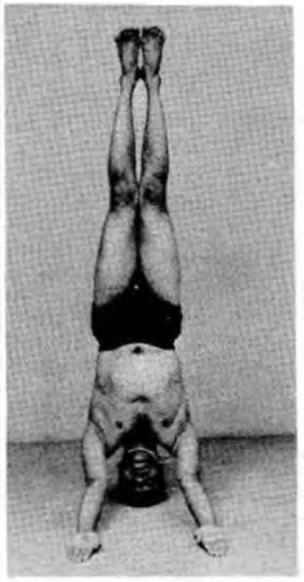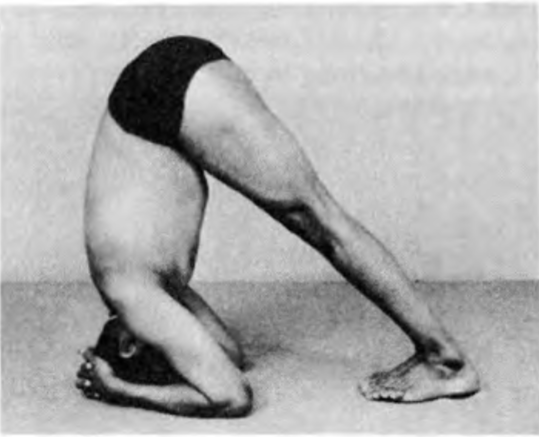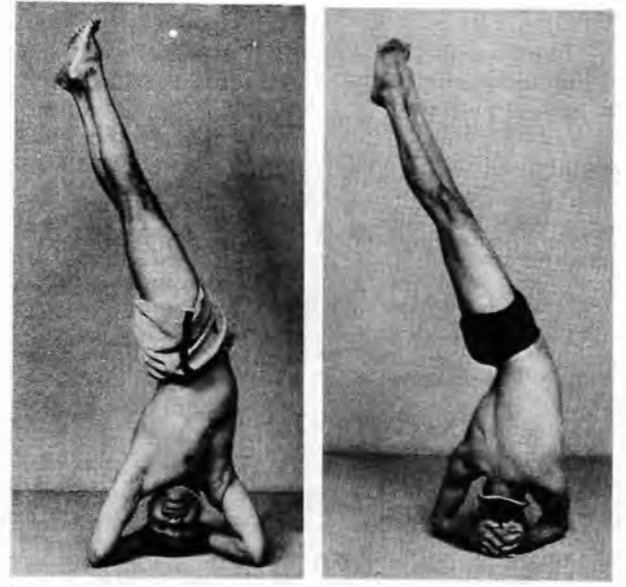Search your article
Mukta Hasta Sirsasana
Mukta Hasta Sirsasana- 6
Mukta means free. Hasta means hand. This is the most difficult variation of Sirsasana to master. When it comes comfortably, one is a perfect master of the head stand. It is comparatively easy to balance in this asana, but it is extremely difficult to go up and come down keeping the the legs straight without bending them at the knees.
Techniques
1 . Spread a balanket fourfold on the floor and kneel near it.
2. Bend the trunk forward and rest the crown of the head on the blanket.
3· Stretch the arms straight out in front of the chest towards the feet and rest the back of the wrists on the floor. Keep the arms straight at the elbows with the palms up. The distance between the wrists should be the same as that between the shoulders.
4· Raise the trunk until it is perpendicular to the floor. Press the wrists gently against the floor, exhale and raise the feet. Tighten the legs and slowly raise them up until they are perpendicular.
5· Stay in the pose for a minute with normal breathing. Keep the arms straight, stretch the elbows and extend the shoulders as high as possible from the floor, without disturbing the position of the wrists.
6. Exhale, swing the hips slightly back and tiring the legs down to the floor gradually, with the weight of the body thrown slightly on the wrists.
7· Then lift the head up from the floor, sit down and relax.
Note. Once mastery over the variations of Sirsasana is secured, It is possible to change the position of the hands while balancing on the head only. One need not then come down again to change the position of the hands. One should learn this gradually, otherwise one is apt to strain the neck and shoulders.
Parsva Sirsasana – 8
Techniques
1. From the straight Salamba Sirsasana I, exhale and move the spine with a twist to the right ; except the head and the hands turn the body sideways. (Front view : Plate 202. Back view : Plate 203)
2. The legs and navel should face sideways 90 degrees to their original positions as in the illustrations. One should feel the stretch near the region of the floating ribs.
The Sirsasana Cycle
In Sirsasana there is a variety of movements which can be practiced at one stretch after staying in Salamba Sirsasana for not less than 5 minutes according to one’s capacity. One may practice for 5 to 15 minutes and then perform these various movements for 20 to 30 seconds on each side at a time.
3· Hold the pose from 20 to 30 seconds with normal breathing.
4· Exhale, come back to the straight Salamba Sirsasana I. Take a breath, exhale and repeat the pose on the left side for the same length of time. Exhale and come to the straight position of Salamba Sirsasana I.
Effects
This asana makes the spine strong and elastic.



